Description
The instruction for medical use
of Fangiflyu Torgovoye medicine a name
to Fangifl Mezhdunarodnoye the unlicensed
name Flukonazol Lekarstvennaya a form
of the Capsule of 150 mg
Structure
One capsule contains
active agent – flukonazol 150 mg,
excipients: lactose, starch, silicon dioxide colloidal, sodium lauryl sulfate, magnesium stearate,
structure of a cover of the capsule: phloxine B, sunset yellow, titan dioxide (E 171), gelatin.
The description
the Solid gelatin capsule No. 2 consisting of the body of white color and a lid of pink color.
Contents of the capsule represent powder of white or almost white color.
Pharmacotherapeutic group
Antifungal drugs for system use. Triazole derivatives. Flukonazol.
The ATX J02AC01 code
the Pharmacological
Pharmacokinetics Absorption properties – high (food does not influence absorption speed), bioavailability – 90%. Time of achievement of the maximum concentration (TCmax) in plasma after intake on an empty stomach of 150 mg – 0.5-1.5 h and the maximum concentration (Cmax) in plasma make 90%.
Communication with proteins of plasma – 11-12%. Concentration in plasma is in direct dependence on a dose. Equilibrium concentration of substance (Css) in blood is reached by 4-5 day of reception (at reception of 1 times a day). Introduction of the ‘shock’ dose (in the first day) twice exceeding a usual daily dose allows to reach the concentration corresponding to 90% of Css by 2nd day. Well gets into all liquids of an organism. Concentration of active agent in breast milk, articulate liquid, saliva, a phlegm and peritoneal liquid are similar to that in plasma. Constant values in a vaginal secret are reached in 8 h after intake and keep at this level not less than 24 h. Well gets into cerebrospinal fluid (SMZh), in fungal meningitis the concentration in SMZh makes about 85% of that in plasma. In stalemate liquid, epidermis and a corneal layer (selection accumulation) the concentration exceeding serumal are reached. After intake of 150 mg on 7 put concentration in a corneal layer of skin – 23.4 mkg/g, and in 1 week after reception of the second dose – 7.1 mkg/g, concentration in nails after 4 months of use in a dose of 150 mg once a week – 4.05 mkg/g in healthy and 1.8 mkg/g in the affected nails. The volume of distribution approaches the general content of water in an organism.
Elimination half-life (T1/2) – 30 h. Is CYP2C9 isoenzyme inhibitor in a liver. It is removed mainly by kidneys (80% – in not changed look, 11% – in the form of metabolites). The clearance of a flukonazol is proportional to the clearance of creatinine (CC).
The pharmacokinetics of a flukonazol significantly depends on a functional condition of kidneys, at the same time there is inverse relation between T1/2 and MM. After a hemodialysis during 3 h the concentration of a flukonazol in plasma decreases by 50%.
The pharmacodynamics
Flukonazol – antifungal means, possesses highly specific action, inhibiting activity of enzymes of the mushrooms dependent on P450 cytochrome. Blocks transformation of a lanosterol of cells of mushrooms into ergosterol, increases permeability of a cellular membrane, breaks its growth and replication.
Flukonazol, being high-selective for P450 cytochrome of mushrooms, practically does not oppress these enzymes in a human body (in comparison with itrakonazoly, Clotrimazolum, econazoly and ketokonazoly to a lesser extent suppresses oxidizing processes, dependent on P450 cytochrome, in microsomes of a liver of the person). Has no antiadrogenny activity.
It is active in the opportunistic mycoses including caused by Candida spp. (including generalized forms of candidiasis against the background of an immunosuppression), Cryptococcus neoformans and Coccidioides immitis (including intracranial infections), Microsporum spp. and Trichophyton spp, in the endemic mycoses caused by Blastomyces dermatitides, Histoplasma capsulatum (including at an immunosuppression).
Indications
– the systemic lesions caused by Cryptococcus mushrooms including meningitis, sepsis, infections of lungs and skin, as at patients with the normal immune response, and at patients with various forms of an immunosuppression (including at patients with AIDS, at organ transplantation), prevention of a cryptococcal infection at patients with AIDS.
– generalized candidiasis: a kandidemiya, disseminate candidiasis (with defeat of endocardium, abdominal organs, respiratory organs, eyes and urinogenital bodies), including at the patients receiving a course of cytostatic or immunosuppressive therapy and also in the presence of other factors contributing to their development.
– candidiasis of mucous membranes: oral cavities, drinks, a gullet, noninvasive bronchopulmonary candidiases, a kandiduriya, the skin and mucous and chronic atrophic candidiasis of an oral cavity (connected with carrying dentures).
– genital candidiasis: vaginal (sharp and recurrent), balanitis.
– prevention of fungal infections at patients with malignant tumors against the background of khimio- or radiation therapy, prevention of a recurrence of oropharyngeal candidiasis at patients with AIDS.
– skin mycoses: stop, bodies, inguinal area, onychomycosis, chromophytosis, skin candidosis infections.
– deep endemic mycoses (a coccidioidosis, a sporotrichosis and histoplasmosis) at patients with normal immunity.
A route of administration and doses
the Drug Fangiflyu should be taken inside.
The adult for prevention of a recurrence of oropharyngeal candidiasis at patients with AIDS after end of a full course of primary therapy – on 150 mg once a week.
In vaginal candidiasis – 150 mg once. For decrease in frequency of a recurrence use on 150 mg within 4-12 months once a month.
In the balanitis caused by Candida – 150 mg a day once.
At damages of skin, including mycoses of feet, smooth skin, skin of inguinal area, and candidiases – 150 mg once a week, treatment duration – 2-4 weeks (up to 6 weeks in mycoses of feet).
In a chromophytosis – 300 mg (2 capsules on 150 mg) once a week within 2 weeks, some patients need the third dose of 300 mg (2 capsules on 150 mg) in a week while regarding cases the single dose of 300 mg is accorded sufficient.
In an onychomycosis – 150 mg once a week, treatment continues before change of the infected nail. Repeated growth of nails on fingers of hands and feet normal requires 3-6 months and 6-12 months respectively.
Use for elderly people
in the absence of symptoms of a renal failure drug is appointed in a usual dose.
Use for patients with a renal failure
At single dose of change of a dose is not required. At patients, including children, with a renal failure at repeated use of drug it is necessary to enter originally a shock dose from 50 mg to 400 mg then the daily dose (depending on the indication) is established according to the following table:
Clearance of creatinine (ml/min.)
Percent of the recommended dose
& gt,
50 ≤50 (without dialysis)
Regular dialysis
of 100%
of 50%
of 100% after each dialysis
the Patients on regular dialysis have to receive 100% of the recommended dose after each dialysis, in days, when there is no dialysis, patients have to receive the reduced dose according to their clearance of creatinine.
Side effects
Flukonazol is usually well had.
Often (from ≥1/100 to & lt, 1/10): headache, nausea, vomiting, abdominal pain, diarrhea, increase in level of alkaline phosphatase, serumal level of aminotransferases (ALT and nuclear heating plant), skin rash.
Infrequently (from ≥1/1.000 to ≤1/100): insomnia, drowsiness, dizziness, spasms, paresthesia, change of taste, vertigo, dyspepsia, a meteorism, dryness in a mouth, a cholestasia, jaundice, increase in level of bilirubin, an itching, urticaria, the increased sweating, myalgia, fatigue, an indisposition, weakness, fever.
Seldom (from ≥1/10.000 to ≤1/1.000): an agranulocytosis, a leukopenia, a neutropenia, thrombocytopenia, an anaphylaxis, a Quincke’s disease, a gipertriglitseridemiya, a hypercholesterolemia, a hypopotassemia, a tremor, tachycardia, blinking/trembling of ventricles, increase in an interval QT, dyspepsia, a meteorism, dryness in a mouth, hepatotoxicity, including exceptional cases with a lethal outcome, a liver failure, hepatocellular necrosis, hepatitis, hepatocellular damages, a toxic epidermal necrolysis, Stephens-Johnson’s syndrome, sharp generalized exanthematous pustulez, exfoliative dermatitis, a face edema, an alopecia.
At patients with AIDS or cancer, at treatment to Fangifl and similar drugs changes of indicators of blood, function of kidneys and a liver were observed, however the clinical value of these changes and their communication with treatment are not established.
Contraindications
– hypersensitivity to a flukonazol, other components of drug or azolny substances with similar to a flukonazol structure,
– a concomitant use of a terfenadin during repeated use to Fangifl in a dose of 400 mg/days and more,
– a concomitant use of the medicines extending an interval of QT and which are metabolized by means of CYP3A4 enzyme, such as tsizaprid, astemizol, erythromycin, Pimozidum and quinidine
– patients with rare hereditary problems of intolerance of a galactose, a lactose intolerance or glyukozo-galaktozny malabsorption since capsules fangiflyu contain lactose,
– pregnancy and the period of a lactation,
– children’s age up to 18 years
With care
Disturbance of indicators of function of a liver against the background of use of a flukonazol, appearance of rash against the background of use of a flukonazol for patients with a superficial fungal infection and invasive/system fungal infections, simultaneous use of a terfenadin and flukonazol in a dose less than 400 mg/days, potentially pro-arrhythmic states at patients with multiple factors of risk (organic heart diseases, disturbances of electrolytic balance and the accompanying therapy contributing to the development of similar disturbances).
Medicinal interaction
Flukonazol – is inhibitor of an isoenzyme of P450 cytochrome (CYP) and moderate inhibitor of CYP3A4 enzyme. Except the interactions provided below there is a risk of increase in plasma concentration of other connections which are metabolized CYP2C9 and CYP3A4 enzyme at simultaneous use about Fangiflya. Therefore, it is necessary to show care when using these combinations, and for patients the careful control is necessary. Enzyme – inhibiting effect of a flukonazol remains 4-5 days after the termination of the Fangiflyu drug treatment because of long elimination half-life.
The concomitant use with alfentanily leads to decrease in clearance and volume of distribution and also lengthening of elimination half-life of an alfentanil.
Increases efficiency of coumarinic anticoagulants (increase in a prothrombin time of warfarin – on average by 12%), concentration of a zidovudine (increase in side effects of a zidovudine), cyclosporine (at use of a flukonazol in a dose of 200 mg a day), a rifabutin (at simultaneous use uveitis cases are described) and Phenytoinum in clinically significant degree (at combined use the control of concentration of Phenytoinum in plasma is necessary).
Extends T1/2 of theophylline and increases risk of developing intoxication (correction of its dose is necessary).
Increases concentration of midazolam – increase in risk of psychomotor effects (is more expressed at use of a flukonazol inside, than intravenously (in / c)), a takrolimusa – risk of nephrotoxicity.
At a concomitant use with sulphonylurea derivatives (chlorpropamide, glibenclamide, glipizid and tolbutamide) it is necessary to control periodically concentration of glucose in blood and if it is necessary, to make dose adjustment of hypoglycemic medicines (since flukonazol extends T1/2).
The hydrochlorothiazide increases concentration of a flukonazol in plasma by 40%, rifampicin reduces T1/2 by 20% and the area under a curve concentration time (AUC) – for 25%. At the patients receiving the accompanying therapy by rifampicin Fangifl needs increase in a dose.
Terfenadin and tsizaprid increase risk of developing of arrhythmias, including paroxysms of ventricular tachycardia (torsades de pointes).
To triazoles (single dose) increases AUC by 50%, Cmax for 20-32% and T1/2 for 25-30%, because of inhibition of metabolism of a triazolam. Dose adjustment of a triazolam can be required.
Flukonazol inhibits metabolism of carbamazepine and increases concentration of the last in serum by 30%. Dose adjustment of carbamazepine depending on measurements of a ratio concentration/effect can be required.
Blockers of calcium channels: some antagonists of calcium channels (nifedipine, isradipin, amlodipin, verapamil and felodipin) are metabolized by CYP3A4 enzyme. System influence of antagonists of calcium channels can raise Fangiflya. Frequent monitoring of side effects of drugs is recommended.
Tselekoksib: during the accompanying therapy flukonazoly (200 mg a day) and tselekoksiby (200 mg), Cmax and AUC of a tselekoksib increased by 68% and 134%, respectively.
Fentanyl: flukonazol delays fentanyl elimination. The increased concentration of fentanyl can result in respiratory insufficiency.
Galofantrin: flukonazol can increase concentration of a galofantrin in plasma because of the inhibiting effect on CYP3A4.
Inhibitors hydrooxymethylglutaryl coenzyme of A-reductase (GMG-KoA-reduktazy): increase in risk of development of a myopathy and acute necrosis of skeletal muscles (rhabdomyolysis) when the drug Fangiflyu is appointed along with GMG-KoA-reduktazy inhibitors which are metabolized through CYP3A4, such as atorvastitin and simvastatin, or through CYP2C9, such as fluvastatin. If the accompanying therapy is necessary, the patient has to be observed on emergence of symptoms of a myopathy and a rhabdomyolysis and also control of level of a creatine kinase has to be carried out. Intake of inhibitors of GMG-KoA-reduktazy should be stopped if increase in level of a creatine kinase is observed, it is diagnosed or development of a myopathy / rhabdomyolysis is suspected.
Lozartan: flukonazol inhibits metabolism of a lozartan and its active metabolite (E 31-74) which is responsible for antagonism of receptors of angiotensin II. At patients it is necessary to control arterial blood pressure.
Non-steroidal anti-inflammatory drugs (NPVP): Cmax and AUC of a flurbiprofen increase by 23% and 81%, respectively, at co-administration with flukonazoly, in comparison with monotherapy flurbiprofeny. The same way, Cmax and AUC pharmacological of active isomer [S-(+) – an ibuprofen] were increased by 15% and 82%, respectively, when flukonazol it was appointed along with racemic mix of an ibuprofen (400 mg) in comparison with monotherapy of the last.
The drug Fangiflyu can strengthen system influence of other NPVP which are metabolized by means of CYP2C9 (for example, Naproxenum, to lornoksika, meloksika, diclofenac). Frequent monitoring of the side effects and toxicity connected with NPVP is recommended. Dose adjustment of NPVP can be required.
Oral contraceptives: the significant influence of a dose of a flukonazol of 50 mg on the level of hormones was not noted while at a daily dose of 200 mg, AUC (the area under a curve concentration time) ethinylestradiol and levonorgestrel were increased by 40% and 24%, respectively. Thus, repeated use of a flukonazol in such doses can hardly influence efficiency of the combined oral contraceptive drugs.
Sakvinavir: flukonazol increases AUC of a sakvinavir approximately by 50%, Cmax approximately for 55% and reduces clearance of a sakvinavir approximately by 50% at the expense of inhibition of hepatic metabolism of a sakvinavir by means of CYP3A4 and inhibition of the R-glycoprotein. Dose adjustment of a sakvinavir can be required.
Sirolimus: flukonazol increases plasma concentration of a sirolimus, presumably, by inhibition of metabolism of a sirolimus by means of CYP3A4 and the R-glycoprotein. This combination can be used at dose adjustment of a sirolimus depending on measurements of a ratio effect / concentration.
Vitamin A: this combination can be used, but patients should be observed for the purpose of identification of the side effects connected with central nervous system.
Vorikonazol (CYP2C9, CYP2C19 and CYP3A4 inhibitor): simultaneous use of an oral vorikonazol (to 400 mg there are each 12 hours in the 1st day, then to 200 mg there are each 12 hours within 2.5 days) and an oral flukonazol (400 mg in the 1st day, then to 200 mg there are each 24 hours within 4 days) led to increase in concentration and AUC of a vorikonazol on average by 57% (90% of C1: 20%, 107%) and 79% (90% of CI: 40%, 128%), respectively. Co-administration of a vorikonazol and flukonazol in any dose is not recommended.
Researches of interaction of oral forms of a flukonazol at its concomitant use with food, Cimetidinum, antacids and also after total body irradiation for bone marrow transplantation showed that these factors have no clinically significant impact on absorption of a flukonazol.
The special
instructions Treatment need to be continued before emergence of kliniko-hematologic remission. The premature termination of treatment leads to a recurrence.
Treatment can be begun in the absence of results of crops or other laboratory analyses, but at their existence the corresponding correction of fungicide therapy is recommended.
During treatment it is necessary to control blood indicators, function of kidneys and a liver. When developing renal failures and a liver it is necessary to stop administration of drug.
Hepatotoxic action of a flukonazol is usually reversible, symptoms disappear after the therapy termination. Patients at whom during the Fangiflyu drug treatment indicators of function of a liver are broken need to be observed for the purpose of identification of signs of damage of a liver. At emergence of clinical signs or symptoms of damage of a liver which can be connected with use to Fangifl, drug should be cancelled.
Against the background of administration of drug at patients exceptional cases of development of exfoliative skin reactions, such as Stephens-Johnson’s syndrome and toxic epidermal necrolysis were celebrated. Patients with AIDS and malignant new growths are more inclined to development of heavy skin reactions at use of many drugs. At emergence in the patient during treatment of a superficial fungal infection, rash which Fangifl can connect with use, drug should be cancelled. At appearance of rash in patients with their invasive/system fungal infections Fangifl should observe and cancel carefully at emergence of bullous defeats or a mnogoformny erythema.
Control of the prothrombin ratio at simultaneous use with anticoagulants of a coumarinic row is necessary.
Increase in an interval of QT at the ECG can call Fangiflya. At use the increase in an interval of QT and blinking/trembling of ventricles marked out Fangiflya very seldom at patients with multiple factors of risk, such as organic heart diseases, disturbances of electrolytic balance and the accompanying therapy contributing to the development of similar disturbances. Therefore such patients with potentially pro-arrhythmic states should apply Fangiflya with care.
It is recommended to exercise control of concentration of cyclosporine in blood at the patients receiving the drug Fangiflyu since at patients with the replaced kidney the reception of a flukonazol in a dose of 200 mg a day leads to slow increase in concentration of cyclosporine in plasma.
The feature of influence of medicine on ability to run the vehicle or potentially dangerous mechanisms
Should be careful when driving or using of the equipment as there can be dizziness or spasms.
Overdose
Symptoms: strengthening of side effects (hallucinations, paranoid behavior, etc.).
Treatment: symptomatic – gastric lavage, an artificial diuresis. The hemodialysis during 3 h reduces concentration in plasma approximately by 50%.
Form of release and packing
On 1 capsule in blister strip packaging from aluminum foil and a film polyvinylchloride.
On 1 planimetric packing together with the instruction for medical use in the state and Russian languages place in a pack cardboard.
To Store storage conditions in the dry, protected from light place at a temperature not above 25 °C.
To store out of children’s reach!
3 years
not to apply a period of storage after an expiration date.
Prescription status
According to the prescription
of Proizvoditel Ej Pharm Prayvet Limited,
166 Atlanta building, 209 Nariman Point,
Mumbai – 400021, India
the Owner of the registration certificate
of Ej Pharm Prayvet Limited, India
to Develop
Additional information
| Ingredient |
|---|





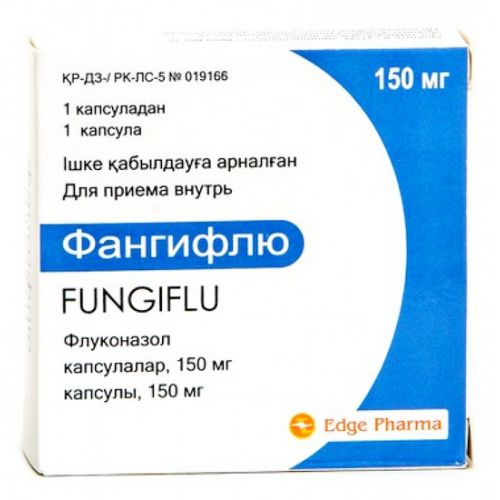
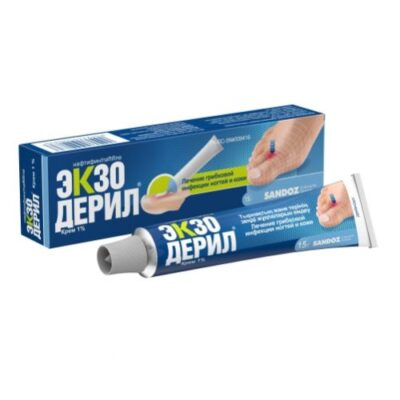
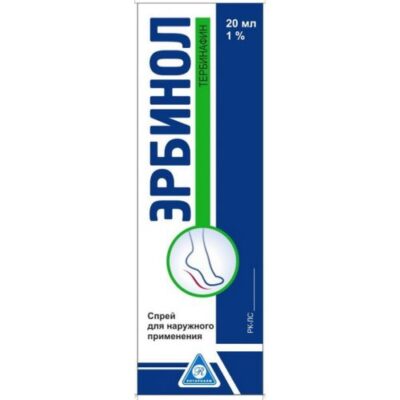
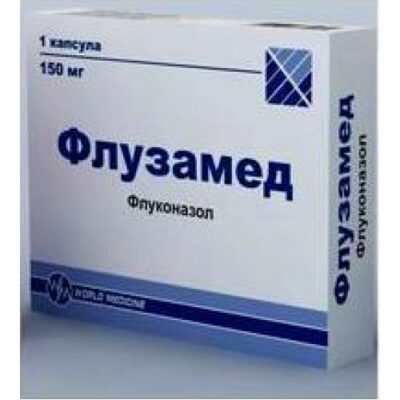
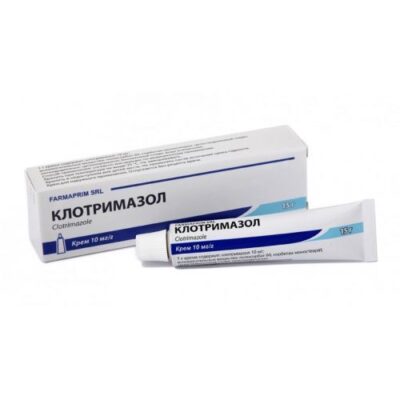
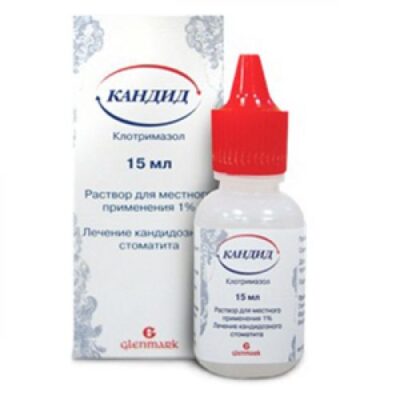
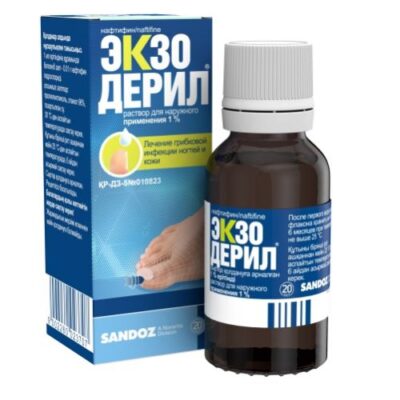
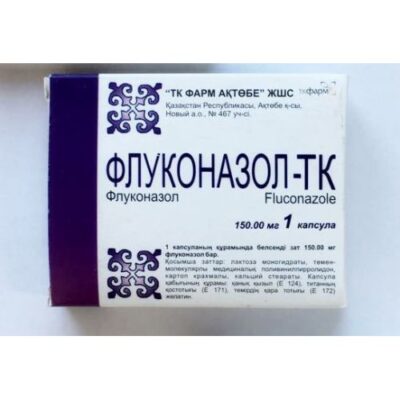
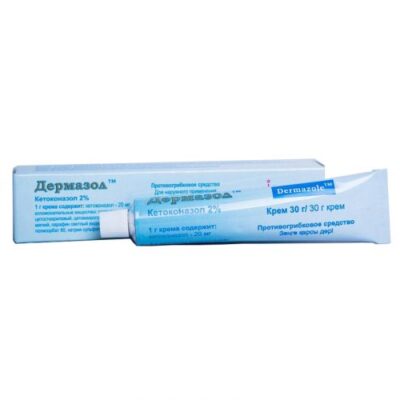
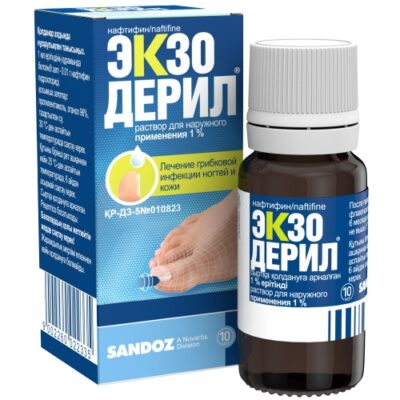
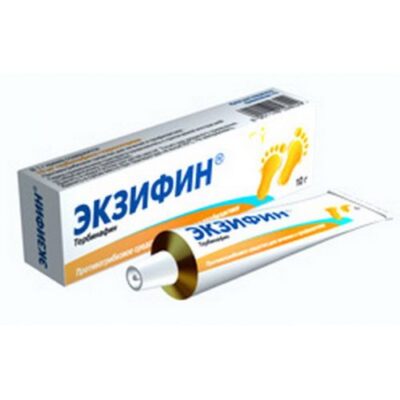






Reviews
There are no reviews yet.